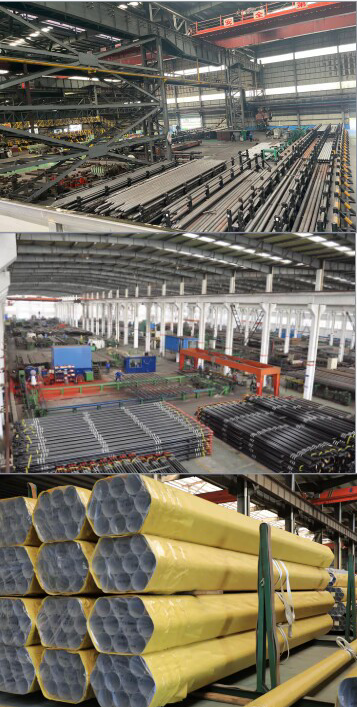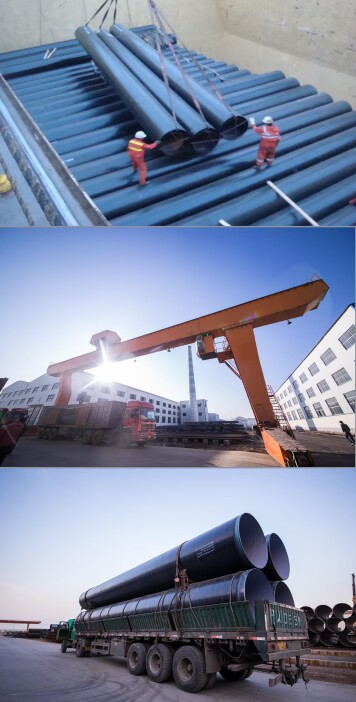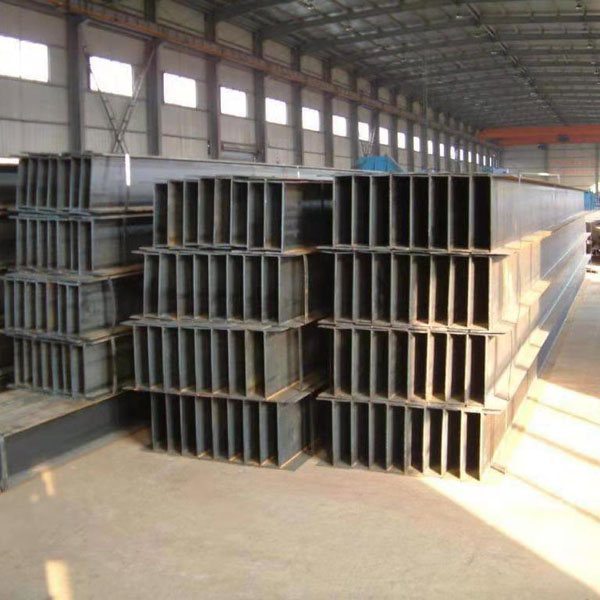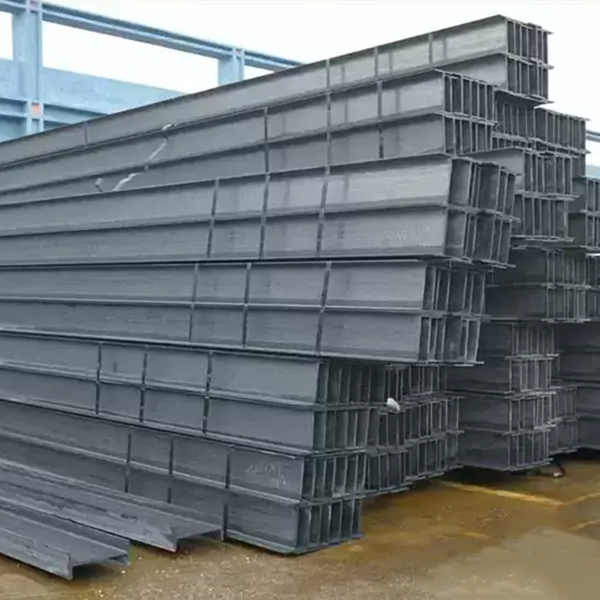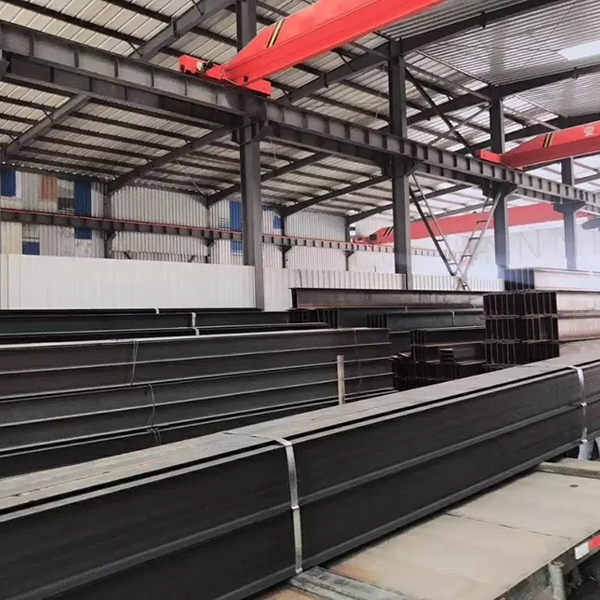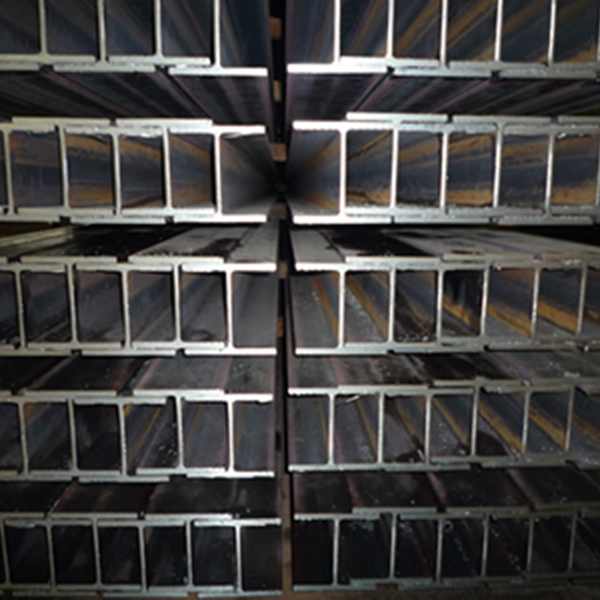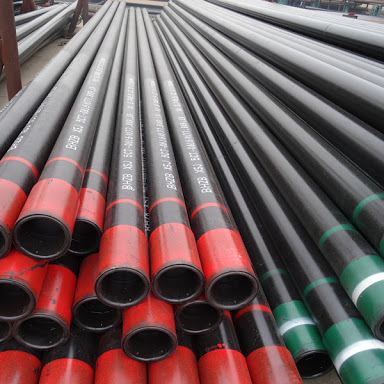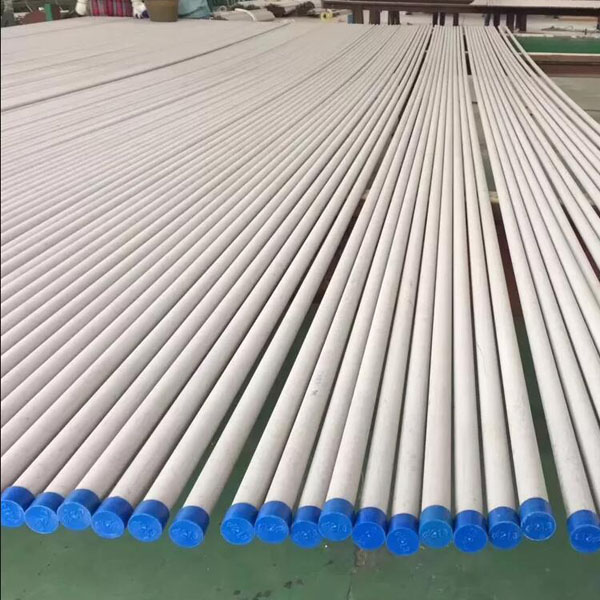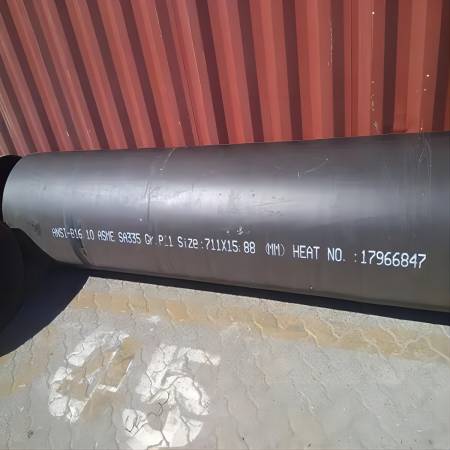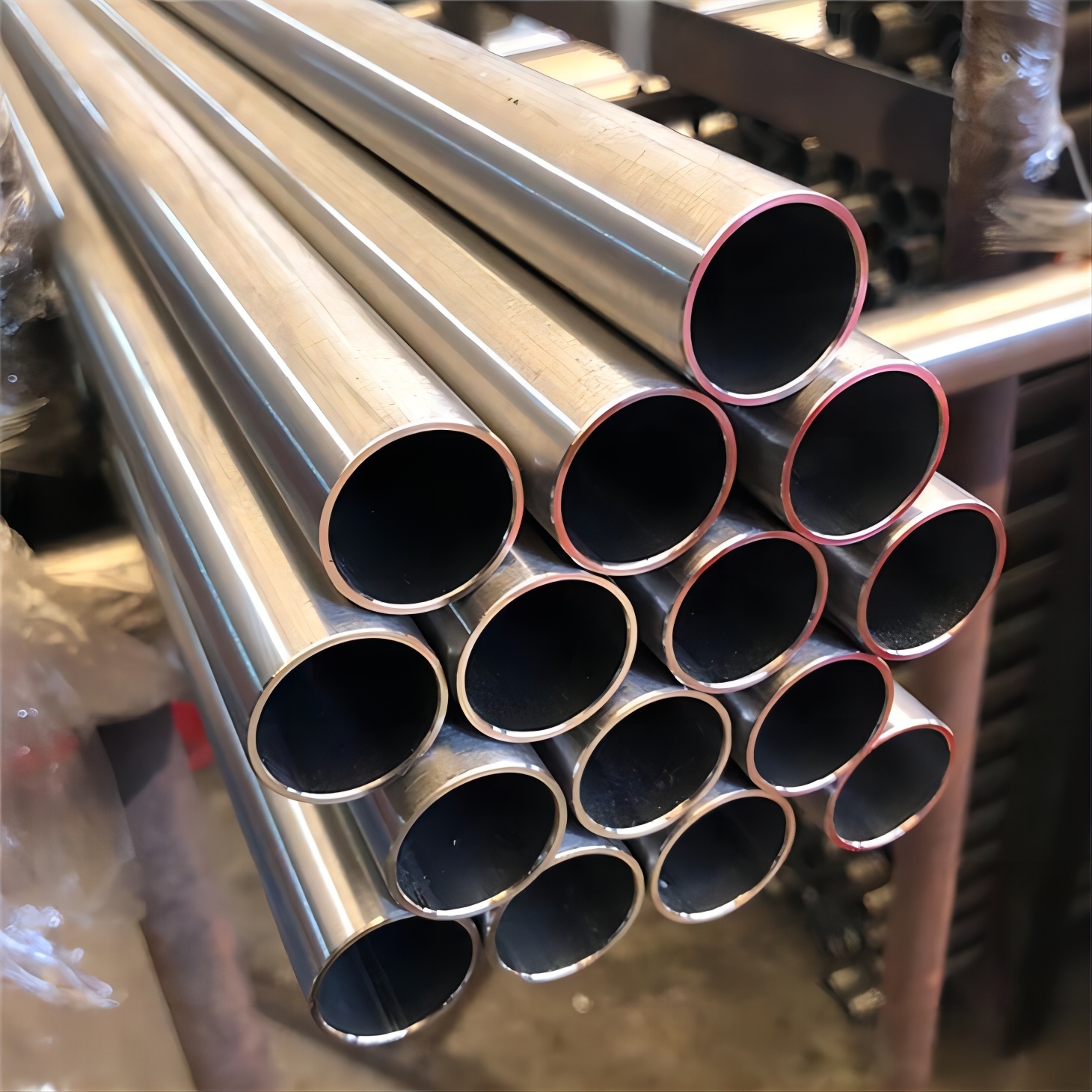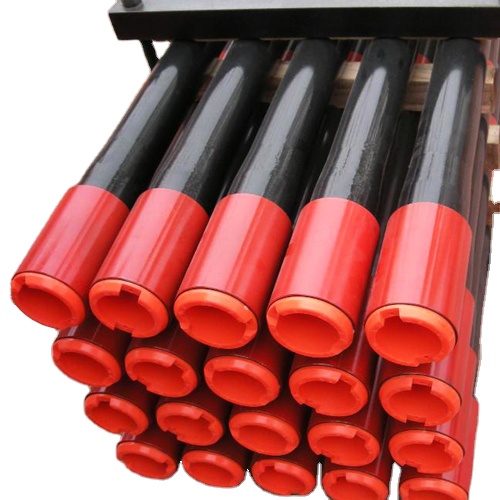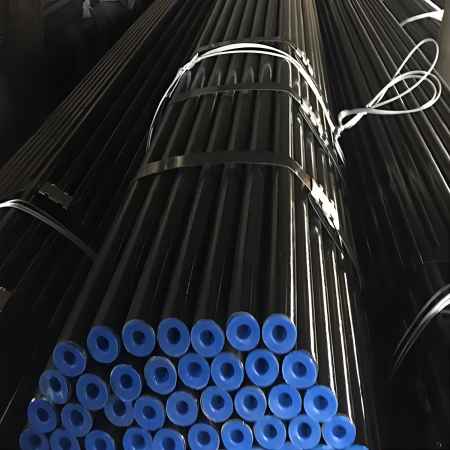H Beam
OVERVIEW OF H-BEAM STEEL
What is H-beam
H-beam steel is a type of structural steel beam. It is named H-beam steel because of the capital H shape over its cross section with equal thickness in the two parallel flanges with no taper on the inside surface. H-beam with a competitive price is a versatile product that is commonly utilized in different kinds of structural applications.
We are a professional H beam supplier and we have different kinds of H beam steels for sale. If you are interested in our H beam steel, please contact us!
FEATURES OF H-BEAM STEEL
H metal beam steel is known for being incredibly strong.
An H-beam can be built up, which means it may be built up to any size or height, making it an ideal material for construction.
TYPES OF H-BEAM
There are many product specifications of H-beams, and the classification methods are as follows.
(1) According to the flange width of the product, it is divided into wide flange, medium flange and narrow flange H-beams. The flange width B of wide flange and medium flange H-beam is greater than or equal to the web height H. The flange width B of narrow flange H-beam is approximately equal to one-half of the web height H. The flange width of narrow flange H-beam is approximately equal to the web height H.
(2) According to the product use, it is divided into H-beam, H-beam column, H-beam pile, and very thick flange H-beam. Sometimes parallel-legged channels and parallel-flange T-beams are also included in the range of H-beams. Generally, narrow flange H-beam is used as beam material, and wide flange H-beam is used as column material, according to which there are beam H-beam and column H-beam.
(3) According to the production method, it is divided into welded H-beam and rolled H-beam.
(4) According to the size specification, it is divided into large, medium and small size H-beams. Usually, the products with web height H above 700mm are called large, 300-700mm are called medium, and those less than 300mm are called small. By the end of 1990, the world's largest H-beam web height of 1200mm and flange width of 530mm.
Difference Between Steel I-Beam and H-Beam
What Is H-Beam?
H beam is a structural beam made of rolled steel. It is incredibly strong. It gets its name because it looks like a capital H over the cross-section.
What Is I-Beam?
An I-beam has an I-shaped form. Two horizontal planes, referred to as flanges, are joined by a vertical element, known as the weft, to form an I-beam.
The term "I-beam" comes from the fact that it resembles a capital letter when viewed through a cross-section and has tapering edges. An I-beam has a cross-section that is taller than it is wide at the flange.
Which Is Stronger H Beam or I-Beam?
H-beam: H-beam often has a thicker central web, making it stronger.
I-beam: Since I-beam frequently has a narrower central web than H-beam, it frequently cannot withstand as much stress.
What Is H Beam Used For?
H Beams are frequently used in the construction of bridges, large trailers, and buildings, among other things. H beams are able to support heavier weights than I beams due to their slightly different cross-section shape, thicker central web, and broader flanges.
What Is the Purpose of an I Beam?
Because of its excellent utility, I beams are the preferred form for structural steel construction. I beams are ideal for unidirectional bending parallel to the web because of their form. The web resists shear stress, but the horizontal flanges resist bending movement.
H-Beam and I-Beam: Applications
H beams are perfect for mezzanines, platforms, bridges, and other typical residential and commercial buildings since they have thicker walls and flanges.
In residential constructions, broad flanges are frequently employed. H-beams are the chosen material for the framework of the trailer and vehicle since their interior dimensions are consistent.
For structural steel buildings, bridges, and other civil structures, I-beams are the favored shape choice due to their increased resistance to flanges.
They are also utilized to build the framework and support columns for trains, elevators, beds for trailers and vehicles, winches, and residential and commercial building projects.
Size chart of H-Beam

| Classification (Height × Flange width) |
Standard cross-section dimensions (mm) |
Cross-sectional area(cm3) |
Unit mass (kg/m) |
|||
|---|---|---|---|---|---|---|
| H×B | t1 | t2 | r | |||
| 100×100 | *100×100 | 6 | 8 | 8 | 21.59 | 16.9 |
| 125×125 | 125×125 | 6.5 | 9 | 8 | 30.00 | 23.6 |
| 150×150 | 150×150 | 7 | 10 | 8 | 39.65 | 31.1 |
| 175×175 | 175×175 | 7.5 | 11 | 13 | 51.43 | 40.4 |
| 200×200 | 200×200 *200×204 |
8 12 |
12 12 |
13 13 |
63.53 71.53 |
49.9 56.2 |
| 250×250 | *244×252 250×250 *250×255 |
11 9 14 |
11 14 14 |
13 13 13 |
81.31 91.43 103.9 |
63.8 71.8 81.6 |
| 300×300 | *294×302 300×300 *300×305 |
12 10 15 |
12 15 15 |
13 13 13 |
106.3 118.5 133.4 |
83.4 93.0 105.0 |
| 350×350 | *344×348 *344×354 350×350 |
10 16 12 |
16 16 19 |
13 13 13 |
144.0 164.6 171.9 |
113.0 129.0 135.0 |
| 400×400 | 400×400 | 13 | 21 | 22 | 218.7 | 172.0 |
| Classification (Height × Flange width) |
Reference | |||||
|---|---|---|---|---|---|---|
| Second moment of area(cm4) |
Radius of gyration of area(cm) |
Section modulus(cm3) |
||||
| lx | ly | ix | iy | zx | zy | |
| 100×100 | 378 | 134 | 4.18 | 2.49 | 75.6 | 26.7 |
| 125×125 | 839 | 293 | 5.29 | 3.13 | 134.0 | 46.9 |
| 150×150 | 1,620 | 563 | 6.40 | 3.77 | 216.0 | 75.1 |
| 175×175 | 2,900 | 984 | 7.50 | 4.37 | 331.0 | 112.0 |
| 200×200 | 4,720 4,980 |
1,600 1,700 |
8.62 8.35 |
5.02 4.88 |
472.0 498.0 |
160.0 167.0 |
| 250×250 | 8,700 10,700 11,400 |
2,940 3,650 3,880 |
10.30 10.80 10.50 |
6.01 6.32 6.11 |
713.0 860.0 912.0 |
233.0 292.0 304.0 |
| 300×300 | 16,600 20,200 21,300 |
5,510 6,750 7,100 |
12.50 13.10 12.60 |
7.20 7.55 7.30 |
1,130.0 1,350.0 1,420.0 |
365.0 450.0 466.0 |
| 350×350 | 32,800 34,900 39,800 |
11,200 11,800 13,600 |
15.10 14.60 15.20 |
8.84 8.48 8.89 |
1,910.0 2,030.0 2,280.0 |
646.0 669.0 776.0 |
| 400×400 | 66,600 | 22,400 | 17.50 | 10.10 | 3,330.0 | 1,120.0 |

| Classification (Height × Flange width) |
Standard cross-section dimensions(mm) |
Cross-sectional area(cm3) |
Unit mass (kg/m) |
|||
|---|---|---|---|---|---|---|
| H×B | t1 | t2 | r | |||
| 200×150 | 194×150 | 6 | 9 | 8 | 38.11 | 29.9 |
| 250×175 | 244×175 | 7 | 11 | 13 | 55.49 | 43.6 |
| 300×200 | 294×200 | 8 | 12 | 13 | 71.05 | 55.8 |
| 350×250 | 340×250 | 9 | 14 | 13 | 99.53 | 78.1 |
| 400×300 | 390×300 | 10 | 16 | 13 | 133.30 | 105 |
| 450×300 | 440×300 | 11 | 18 | 13 | 153.90 | 121 |
| 500×300 | 482×300 488×300 |
11 11 |
15 18 |
13 13 |
141.2 159.2 |
111 125 |
| 600×300 | 582×300 588×300 594×302 |
12 12 14 |
17 20 23 |
13 13 13 |
169.20 187.20 217.10 |
133 147 170 |
| 700×300 | 692×300 700×300 |
13 13 |
20 24 |
18 18 |
207.50 231.50 |
163 182 |
| 800×300 | 792×300 800×300 |
14 14 |
22 26 |
18 18 |
239.50 263.50 |
188 207 |
| 900×300 | *890×299 900×300 *912×302 |
15 16 18 |
23 28 34 |
18 18 18 |
266.90 305.80 360.10 |
210 240 283 |
| Classification (Height × Flange width) |
Reference | |||||
|---|---|---|---|---|---|---|
| Second moment of area(cm4) |
Radius of gyration of area(cm) |
Section modulus(cm3) |
||||
| lx | ly | ix | iy | zx | zy | |
| 200×150 | 2,630 | 507 | 8.30 | 3.65 | 271 | 67.6 |
| 250×175 | 6,040 | 984 | 10.40 | 4.21 | 495 | 112 |
| 300×200 | 11,100 | 1,600 | 12.50 | 4.75 | 756 | 160 |
| 350×250 | 21,200 | 3,650 | 14.60 | 6.05 | 1,250 | 292 |
| 400×300 | 37,900 | 7,200 | 16.90 | 7.35 | 1,940 | 480 |
| 450×300 | 54,700 | 8,110 | 18.90 | 7.26 | 2,490 | 540 |
| 500×300 | 58,300 68,900 |
6,760 8,110 |
20.30 20.80 |
6.92 7.14 |
2,420 2,820 |
450 540 |
| 600×300 | 98,900 114,000 134,000 |
7,660 9,010 10,600 |
24.20 24.70 24.80 |
6.73 6.94 6.98 |
3,400 3,890 4,500 |
511 601 700 |
| 700×300 | 168,000 197,000 |
9,020 10,800 |
28.50 29.20 |
6.59 6.83 |
4,870 5,640 |
601 721 |
| 800×300 | 248,000 286,000 |
9,920 11,700 |
32.20 33.00 |
6.44 6.67 |
6,270 7,160 |
661 781 |
| 900×300 | 339,000 404,000 491,000 |
10,300 12,600 15,700 |
35.60 36.40 36.90 |
6.20 6.43 6.59 |
7,610 8,990 10,800 |
687 842 1.040 |
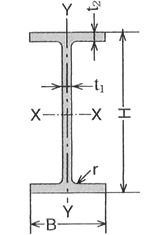
| Classification (Height × Flange width) |
Standard cross-section dimensions(mm) |
Cross-sectional area(cm3) |
Unit mass (kg/m) |
|||
|---|---|---|---|---|---|---|
| H×B | t1 | t2 | r | |||
| 200×100 | *198×99 200×100 |
4.5 5.5 |
7 8 |
8 8 |
22.69 26.67 |
17.8 20.9 |
| 250×125 | 248×124 250×125 |
5 6 |
8 9 |
8 8 |
31.99 36.97 |
25.1 29.0 |
| 300×150 | 298×149 300×150 |
5.5 6.5 |
8 9 |
13 13 |
40.80 46.78 |
32.0 36.7 |
| 350×175 | 346×174 350×175 |
6 7 |
9 11 |
13 13 |
52.45 62.91 |
41.2 49.4 |
| 400×200 | 396×199 400×200 |
7 8 |
11 13 |
13 13 |
71.41 83.37 |
56.1 65.4 |
| 450×200 | 446×199 450×200 |
8 9 |
12 14 |
13 13 |
82.97 95.43 |
65.1 74.9 |
| 500×200 | 496×199 500×200 *506×201 |
9 10 11 |
14 16 19 |
13 13 13 |
99.29 112.30 129.30 |
77.9 88.2 102.0 |
| 600×200 | 596×199 600×200 *606×201 |
10 11 12 |
15 17 20 |
13 13 13 |
117.80 131.70 149.80 |
92.5 103.0 118.0 |
| Classification (Height × Flange width) |
Reference | |||||
|---|---|---|---|---|---|---|
| Second moment of area(cm4) |
Radius of gyration of area(cm) |
Section modulus(cm3) |
||||
| lx | ly | ix | iy | zx | zy | |
| 200×100 | 1,540 1,810 |
113 134 |
8.25 8.23 |
2.24 2.24 |
156 181 |
22.9 26.7 |
| 250×125 | 3,450 3,960 |
255 294 |
10.40 10.40 |
2.82 2.82 |
278 317 |
41.1 47.0 |
| 300×150 | 6,320 7,210 |
442 508 |
12.40 12.40 |
3.29 3.29 |
424 481 |
59.3 67.7 |
| 350×175 | 11,000 13,500 |
791 984 |
14.50 14.60 |
3.88 3.96 |
638 771 |
91.0 112.0 |
| 400×200 | 19,800 23,500 |
1,450 1,740 |
16.60 16.80 |
4.50 4.56 |
999 1.170 |
145.0 174.0 |
| 450×200 | 28,100 32,900 |
1,580 1,870 |
18.40 18.60 |
4.36 4.43 |
1,260 1,460 |
159.0 187.0 |
| 500×200 | 40,800 46,800 55,500 |
1,840 2,140 2,580 |
20.30 20.40 20.70 |
4.31 4.36 4.46 |
1,650 1,870 2,190 |
185.0 214.0 256.0 |
| 600×200 | 66,600 75,600 88,300 |
1,980 2,270 2,720 |
23.80 24.00 24.30 |
4.10 4.16 4.26 |
2,240 2,520 2,910 |
199.0 227.0 270.0 |
Application of H-Beam
- Business Buildings
- Large trailers
- Large bridges
- Industrial plants
- Large large coaxial
- Heavy equipment
- Highway
- Ship skeleton
- Mine support
- Foundation treatment and dam engineering
- Various machine components
We are a professional H beam manufacturer. We provide H beams of different sizes as well as steel pipes and pipe fittings of various specifications.
Our Advantages:
1.China-leading product service provider and exporter of steel pipe
2.Competitive price and quality from our own factory
3.One-stop Resource Integration
4.Passed the ISO9001, CE, SGS certification every year
5.Best service with 24-hour response
6.Flexible payment methods
7.Strong production capacity
8.Fast delivery and standard export packaging
9.OEM/ODM
If you would like to inquire about any steel products, please feel free to contact us: sales@bestartubes.com